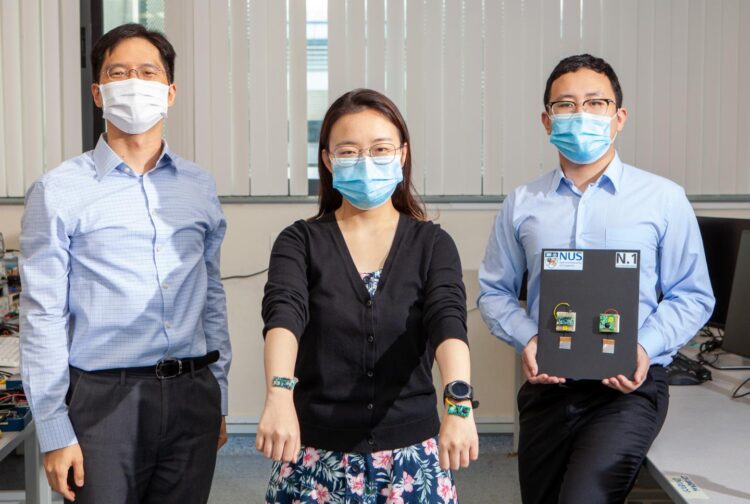Researchers successfully demonstrated the use of the human body as a medium for transmitting and harvesting energy to power wearables
Advancements in wearable technology are reshaping the way we live, work and play, and also how healthcare is delivered and received. Wearables that have weaved their way into everyday life include smart watches and wireless earphones, while in the healthcare setting, common devices include wearable injectors, electrocardiogram (ECG) monitoring patches, listening aids, and more.
A major pain point facing the use of these wearables is the issue of keeping these devices properly and conveniently powered. As the number of wearables one uses increases, the need to charge multiple batteries rises in tandem, consuming huge amounts of electricity. Many users find it cumbersome to charge numerous devices every day, and inconvenient service disruptions occur when batteries run out.
A research team, led by Associate Professor Jerald Yoo from the Department of Electrical and Computer Engineering and the N.1 Institute for Health at the National University of Singapore (NUS), has developed a solution to these problems. Their technology enables a single device, such as a mobile phone placed in the pocket, to wirelessly power other wearable devices on a user’s body, using the human body as a medium for power transmission. The team’s novel system has an added advantage – it can harvest unused energy from electronics in a typical home or office environment to power the wearables.
Their achievement was first published in the journal Nature Electronics on 10 June 2021. It is the first of its kind to be established among existing literature on electronic wearables.
Using the human body as a medium for energy transmission
To extend battery life and sustain fully autonomous – yet wireless – operations of wearable devices, power transmission and energy harvesting approaches are required. However, conventional approaches for powering up body area wearables are limited by the distance that power can be transmitted, the “path” the energy can travel without facing obstacles, and the stability of energy movement. As such, none of the current methods have been able to provide sustainable power to wearables placed around the entire human body.
The NUS team decided to turn the tables on these limitations by designing a receiver and transmitter system that uses the very obstacle in wireless powering – the human body – as a medium for power transmission and energy harvesting. Each receiver and transmitter contains a chip that is used as a springboard to extend coverage over the entire body.
As a complementary source of power, the NUS team also looked into harvesting energy from the environment. Their research found that typical office and home environments have parasitic electromagnetic (EM) waves that people are exposed to all the time, for instance, from a running laptop. The team’s novel receiver scavenges the EM waves from the ambient environment, and through a process referred to as body-coupled powering, the human body is able to harvest this energy to power the wearable devices, regardless of their locations around the body.
Paving the way for smaller, battery-less wearables
On the benefits of his team’s method, Assoc Prof Yoo said, “Batteries are among the most expensive components in wearable devices, and they add bulk to the design. Our unique system has the potential to omit the need for batteries, thereby enabling manufacturers to miniaturise the gadgets while reducing production cost significantly. More excitingly, without the constraints of batteries, our development can enable the next generation wearable applications, such as ECG patches, gaming accessories, and remote diagnostics.”
The NUS team will continue to enhance the powering efficiency of their transmitter/receiver system, with hopes that in future, any given power-transmitting device, be it a user’s mobile phone or smart watch, can satisfy the network power demands of all other wearables on the body, thus enabling a longer battery lifetime.
###
Media Contact
Denise Yuen
[email protected]
Original Source
http://news.
Related Journal Article
http://dx.





